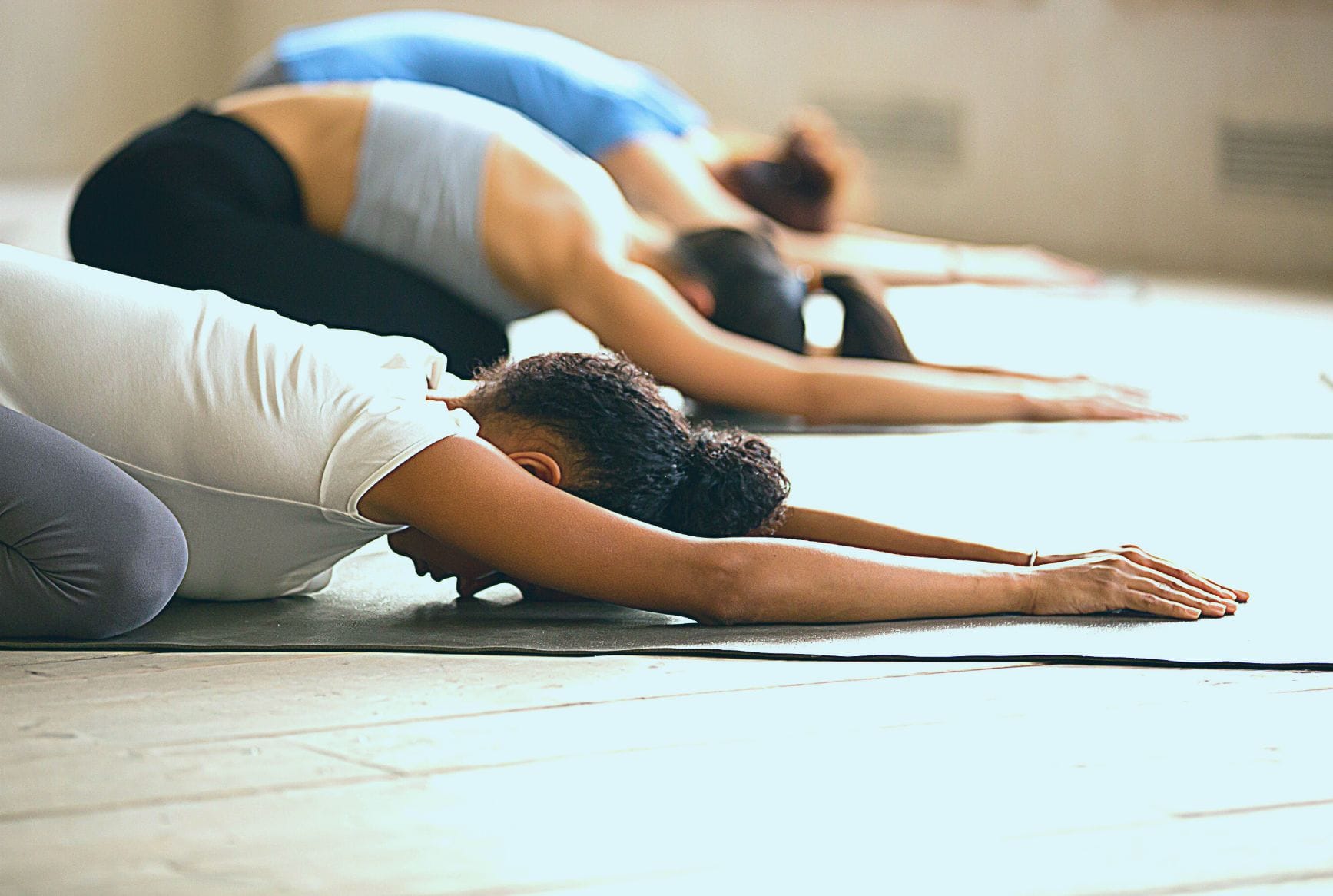
Each morning, I wake up, repeat a few mantras in my head before I even open my eyes. I get up, heat some water, pour a cup of tea, go to the bathroom, change into my yoga clothes, and then still a little bleary-eyed, take my tea to my office for my daily yoga practice and get on my mat.
Each morning is a little different, but I’ve formed a habit of daily yoga practice which consists of asana (yoga poses/movement), pranayama (breathwork), meditation, and self-study (svadhyaya) almost every morning. I also include EFT/Tapping and oracle card drawings in my morning Sadhana practice.
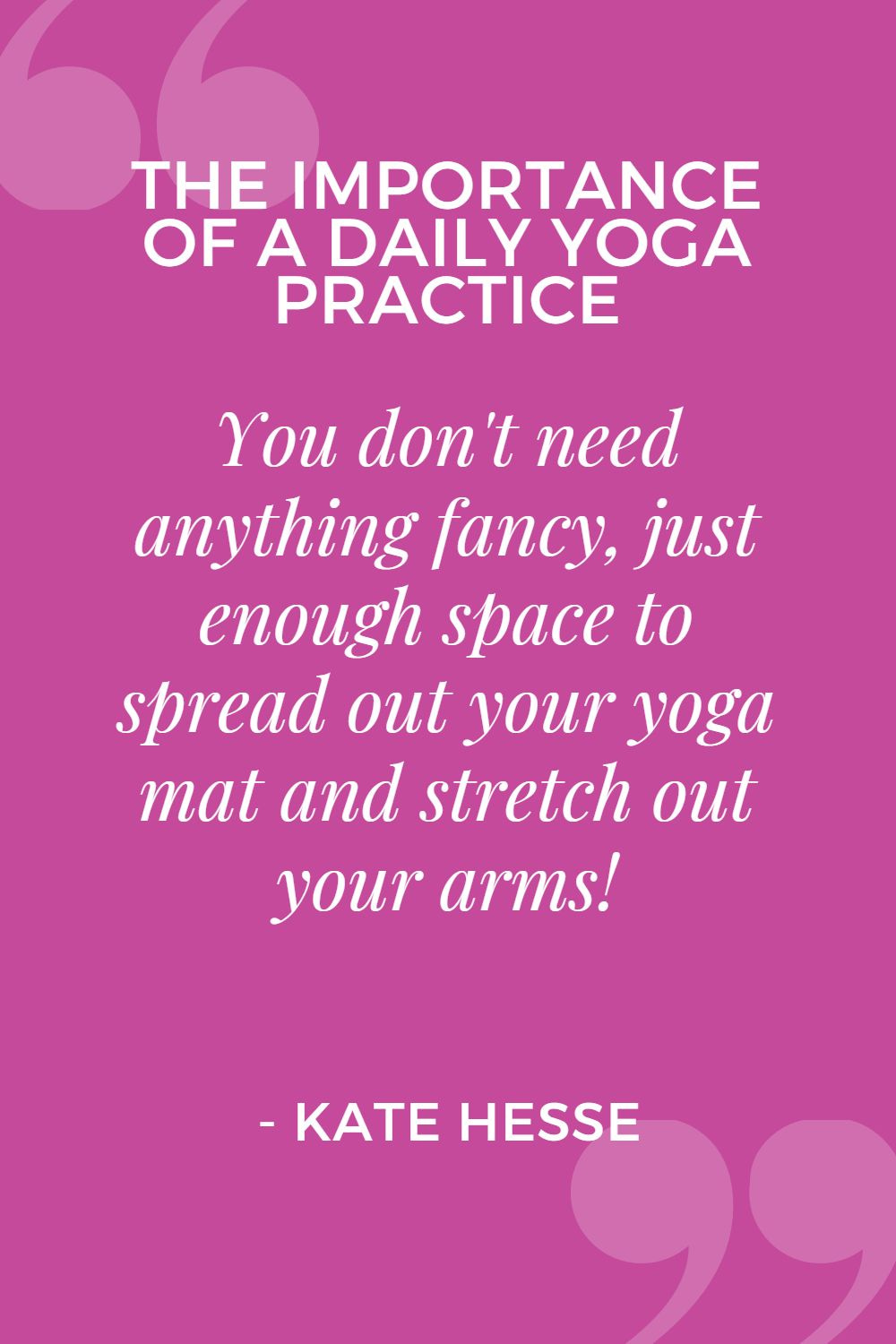 The power of habit
The power of habit
I didn’t always have this routine though. While I would regularly attend studio classes, if I didn’t make it into the studio, I often didn’t find the time for asana, pranayama, or meditation during my day.
There was always an excuse – I didn’t have time, I was too tired, I just didn’t feel up to it. Only these excuses didn’t hold up anymore when I began to realize with a daily yoga practice, I’m more focused and energized throughout the day.
In my experience, habits are the opposite of Mary Poppins’ pie crust promise, they are neither easy to make, nor are they easy to break. Often we look at this concept in the negative, thinking about how hard it is to create healthy habits and how difficult it is to break unhealthy ones. But what if we looked at the other side – if you catch them early, unhealthy habits are hard to form, and once established, good habits are hard to break.
Now when I miss a morning practice, I feel off for the rest of the day. I’m sluggish, stiffer, and quicker to respond to a situation with anxiety. Now that I’ve established the habit, knowing what it feels like when I don’t observe my practice is motivation enough to get me onto my mat each morning.
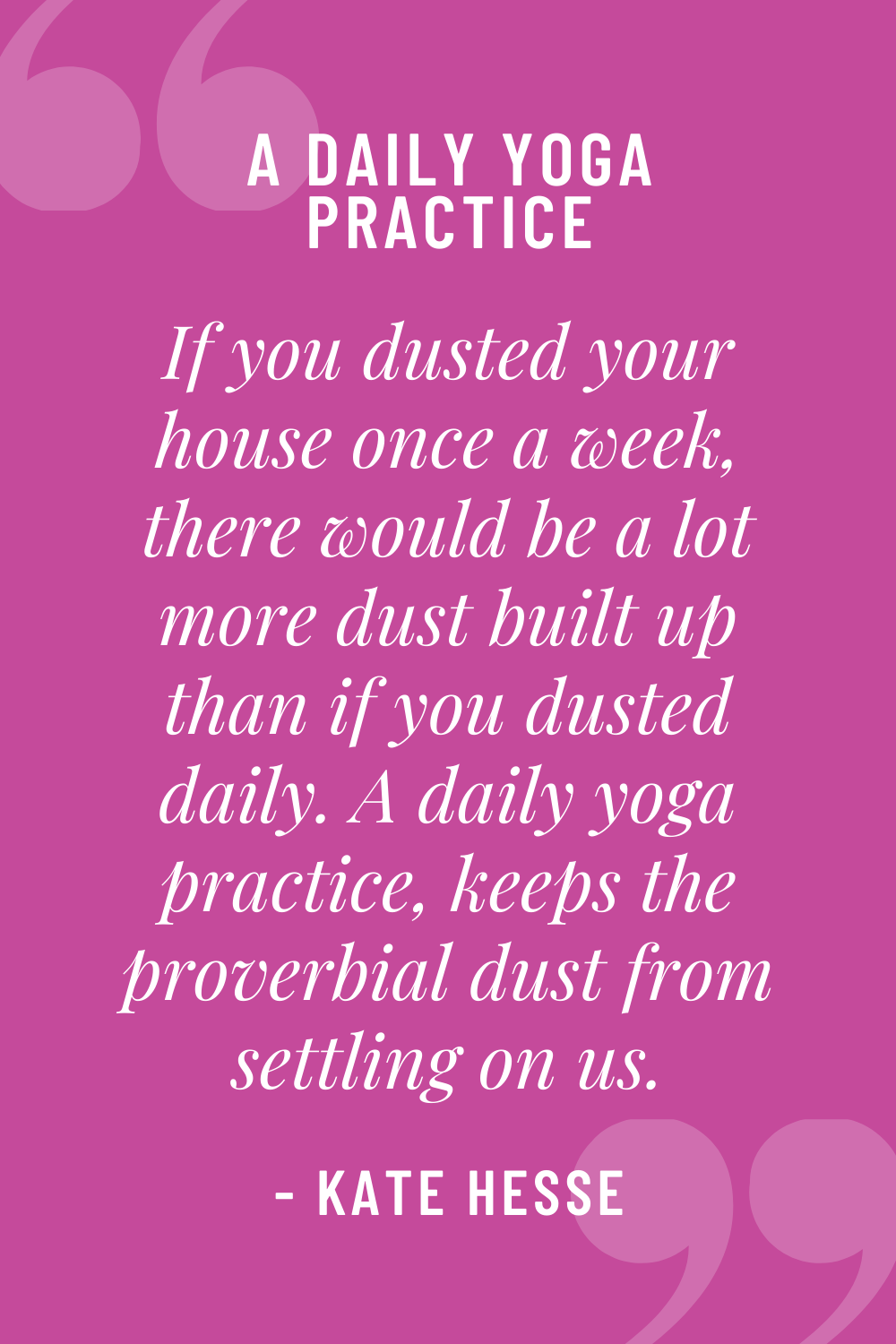 Why a daily yoga practice is important
Why a daily yoga practice is important
I can’t remember where I heard someone make this analogy, but it stuck with me and I love it. If you dusted your house once a week, or once a month, there would be a lot more dust built up than if you dusted once a day. By having a daily practice, we’re able to keep the proverbial dust from settling on us.
When I get on my mat each and every day, I feel more flexible and stronger than when I go for several days without asana.
Yoga isn’t just a workout. An asana practice is as much about your mind as it is about your body. By getting on your mat daily, you maintain much more flexibility and balance in both your body and mind than you do only practicing once or twice a week.
You know that blissful feeling you get when you walk out of an amazing yoga class – calm, relaxed, spacious, and at ease? Imagine how amazing it would be to feel like that every day. (If you haven’t practiced yoga before, I encourage you to review this list for a practice that resonates with you and find a class at your local yoga studio or on YouTube – aim for at least a 30 minute class to get a sense of the style.)
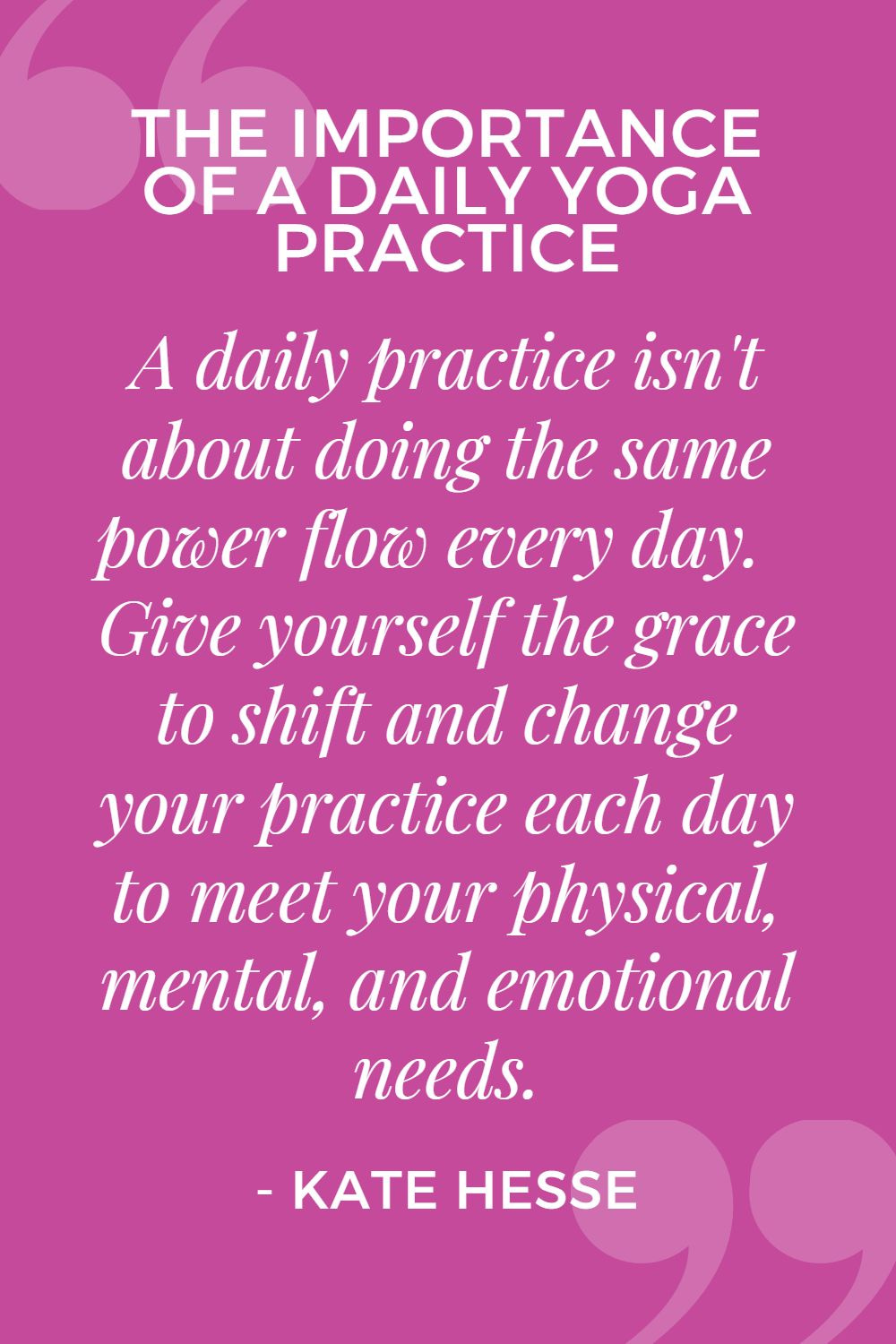 Yoga is about flexibility in more ways that one!
Yoga is about flexibility in more ways that one!
While I advocate a daily practice, don’t get me wrong, I’m not saying you need to do the same power flow every day.
It’s important to be flexible in your asana practice. Sometimes I need the movement of a vinyasa practice to get my energy flowing, other mornings I’m craving the slow introspective movement of a hatha practice, and others still I need the gentle stretching of a yin or restorative practice. (If you’re unfamiliar with these different types of yoga, this is a good intro.)
You want to be flexible enough to shift and change your practice each day to meet your physical, mental, and emotional needs.
My journey to a morning practice
I wasn’t always a morning person (actually I’m still not sure I’d describe myself that way). Having a daily morning practice is something I’ve struggled to establish over the years. I love my afternoon and evening asana classes, but getting on my mat before 8 am used to be a once in a blue moon thing.
You’ve probably heard me mention little steps to success before. And that’s the path I took to building my morning practice.
I started by adding a meditation and pranayama practice to my morning routine (which was once just sitting on the sofa scrolling through my social media feeds and emails while trying to force my eyes open and drinking a cup of tea).
And I found replacing my phone scrolling with meditation and breathwork helped me start my day with more energy and a brighter attitude. Then I slowly challenged myself to get on my mat each morning – even if only for 10 minutes, just to move my body a little, following the asana with my meditation and pranayama practice.
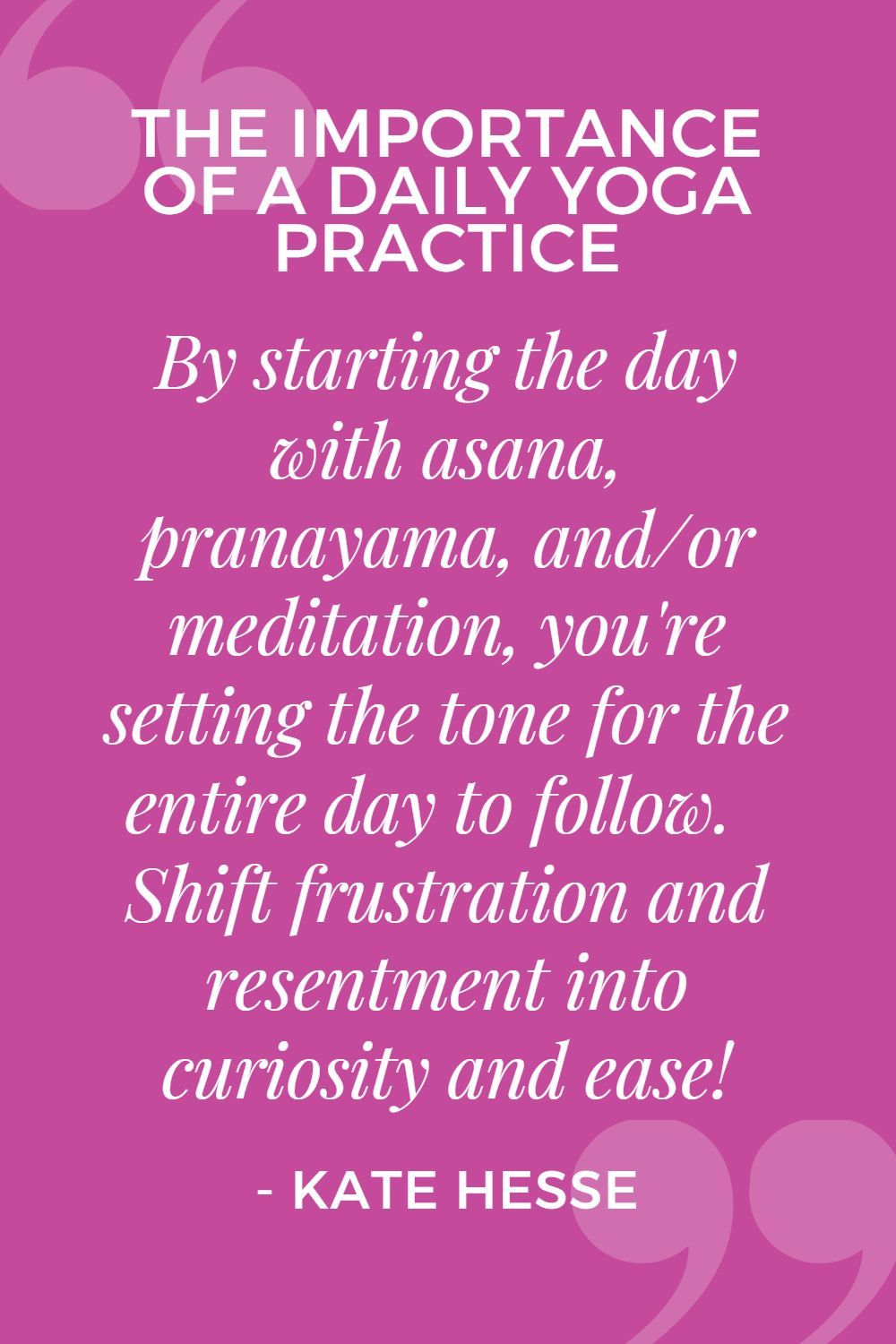 The incredible thing is my daily morning yoga practice has now become something I look forward to each and every day! I love going into the yoga room, rolling out my mat, and stretching out all my sleepy muscles. In the mornings, I notice my body is really stiff when I start my asana practice, but by the end, I feel so much more at ease.
The incredible thing is my daily morning yoga practice has now become something I look forward to each and every day! I love going into the yoga room, rolling out my mat, and stretching out all my sleepy muscles. In the mornings, I notice my body is really stiff when I start my asana practice, but by the end, I feel so much more at ease.
Why a morning yoga practice is important
By starting the day with asana, pranayama, and meditation, I’m setting the tone for the entire day to follow.
Instead of stumbling half-awake into my daily to-do list already feeling stressed from looking through my email and news feeds, I approach the day from a state of calm energy, groundedness, and ease. That means each task becomes an interesting and exciting challenge instead of something to resent for being so hard to figure out while I’m still trying to fully wake up.
Imagine how different your whole day would be if you dedicated a little time each morning to a practice that helped you make that shift too!
How to get started
The beauty of having a home practice is you get to choose what your body, mind and spirit need each day. And you get to pick how long you want to be on your mat. If I know I’ll be taking a class or two later in the day, I might only do 10-15 minutes of asana in the morning. Other days when the weather isn’t great for walking and I know I’ll be sitting at the computer for most of the day, I might do 90 minutes of asana in the morning.
You might find you’re craving meditation much more than you need movement one morning, so you might only do a few gentle warm-up stretches before settling into meditation. Or you might find that by doing an energizing pranayama practice first, you’re much more prepared to move into the asana practice. It’s YOUR practice, and you get to customize it the way that works for you!
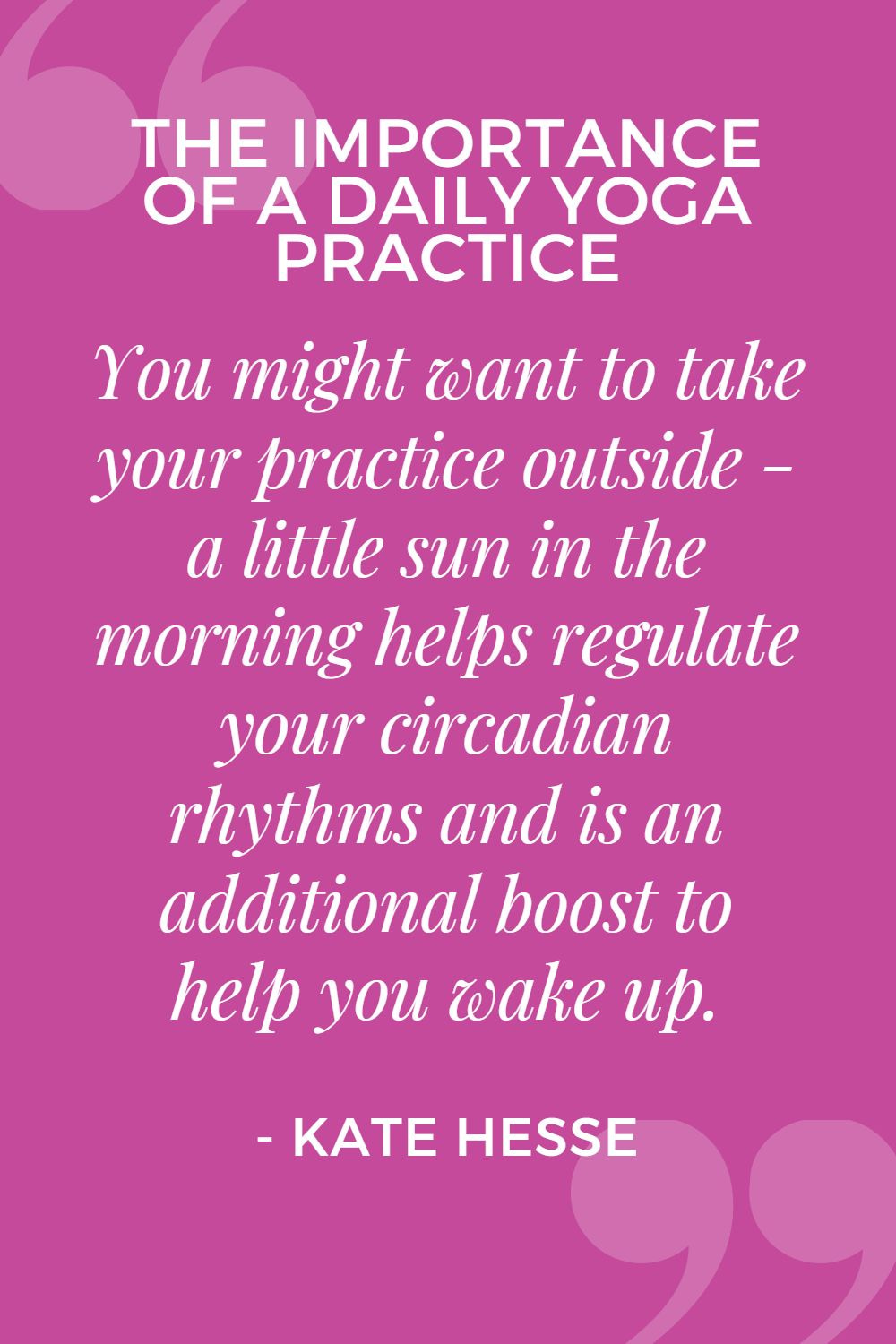 If you have an established yoga practice, you can guide yourself through the asana, breathwork and meditation your body needs that day.
If you have an established yoga practice, you can guide yourself through the asana, breathwork and meditation your body needs that day.
However, even if you have an established practice, it’s often nice to be guided by someone else. Especially in the morning, I love being able to pick a yoga class to stream and follow the instructions of another teacher as my brain is still fully waking up.
Online Yoga Teachers
I have two yoga teachers I turn to often when I want to stream a class on demand. For yogi’s of all levels, I love Yoga with Kassandra. You can stream classes for free through YouTube. I also use her app and find it a great resource (no affiliation, just a happy customer). She offers a wide range of classes in terms of style, intensity, and duration.
The other teacher I adore and turn to frequently is Allie Van Fossen of the Journey Junkie. While her classes are accessible to all, Allie uses a lot of Sanskrit names for poses. If you’re not familiar with these terms from previous yoga classes, I suggest watching her videos once through before getting started.
Make it your practice
As with any yoga class, remember this is YOUR practice.
If you want to take child’s pose while the teacher is directing another pose, take it. If you want to spend the entire class in savasana and just breathe along with the guidance of the teacher, that’s awesome too if it’s what you need.
In fact, if you’re new to yoga, I would encourage you to just watch a video or two, seated comfortably, breathing along with the teacher and watching them move into and out of the poses until you feel you understand what they are cueing you to do.
When it comes to meditation and pranayama, again, you can practice on your own. There are also a LOT of apps out there to offer guided meditations and breathwork practices. I love Insight Timer, Commune Membership, and Hay House’s Empower You App. Most of these have both free and paid versions of their apps (again, no affiliation, just a happy customer). I love these apps for the variety they offer and the quality of the recordings and instructors.
And don’t forget there are several guided breathwork practices as well as guided meditations here on NourishNestBreathe. Plus, you can get a package of my guided meditations and visualizations not available elsewhere here.
Set incentives (and keep them top of mind)
 We don’t all wake up ready to slide into puppy pose with lion’s breath as easily as this cool kitty.
We don’t all wake up ready to slide into puppy pose with lion’s breath as easily as this cool kitty.Going back to Mary Poppins – building new habits can be hard! I find the best way to motivate myself to keep showing up in order to build those habits is to incentivize it.
For instance, when Adam and I wanted to buy an ice cream maker, I challenged us to take a walk for at least 30 minutes every day for a month. When I wanted to get into the yoga studio more often, I promised myself a pair of yoga pants I had been eyeing, but couldn’t justify purchasing, if I made it to four studio classes each week for a month.
Think about something you’ve been wanting – it could be a physical item (like my ice cream maker and yoga pants), a service (manicure, massage or facial), or something you would usually view as decadent (spending an entire day in your pj’s reading or asking your partner to take care of the kids for an hour or two so you can take a relaxing bubble bath).
Once you have your incentive (or incentives – depending on the size of the change, I sometimes build my habits in tiers with increasing “rewards” as I reach each goal), make sure you keep it top of mind. Write it on a post-it note, each night pull out yoga clothes for the next morning and place the note on top of them. Maybe you tape a note with your incentive on it to your bathroom mirror. Or schedule an alert to come up in your phone at the same time each morning reminding you of the reward you’re working for.
And once you get started, don’t forget to keep track!
Remember those gold star charts from childhood? Create your own version. As you see the momentum building toward your reward, it’ll help to reinforce your drive to build that new habit. You can do it digitally or on paper, whatever works best for you.
Here is the biggest thing – once you achieve your goal, DO NOT talk yourself out of your reward. You earned it, and if you deny yourself the reward because you “didn’t work hard enough one day”, or you “really don’t need it”, or “it just seems like too much of a luxury”, then you’ll not only bring a subconscious negative attitude toward the new habit, it will also be much harder to utilize the incentive system in the future to build new habits.
Remember you’re not perfect – allow yourself grace and ease
When you set your goal, remember you’re a human, not a machine. Do I make it onto my mat 365 days a year? Nope. Do I try to do at least a few minutes of breathwork or meditation every day, because it helps keep me sane. YES!
But asana doesn’t always happen every day. Usually I make it onto the mat six days a week. Often on Sundays, Adam and I start slowly and I find myself slipping into a lazy day routine before moving my body. Sometimes by the end of the day I NEED my yoga and I’ll be sure to get in an evening asana practice, other days, it just doesn’t happen.
Be realistic, set a goal that’s a stretch for you but still feels achievable. And have a plan for how you will handle it if you fail to meet your goal. If for instance, your goal was six days of morning yoga for four weeks, and on week 3, work gets crazy and you miss three days of morning practice, do you need to start over at zero? Or can you still earn your reward if you hit the six days a week goal in weeks 4 and 5?
Offering yourself grace
In addiction recovery there’s a saying that I think applies to habit formation as well – no matter how far down the road, you’re always two-feet from the ditch, and no matter how long you’ve been in the ditch, you’re always two-feet from the road. While established habits are harder to break, without continued commitment, focus, and attention, you can fall off track. And once off track, it just takes a recommitment to get you back into rebuilding the groove of your healthy habit.
Susan Peirce Thompson, MD is an expert in food nutrition, but I believe her theory applies equally here. She notes that when you fall off the road, there are four actions that help you get back on your path:
- speed – don’t wallow, get back on track quickly;
- self-compassion – be as kind to yourself as you would to a friend;
- social support – call on those around you to help hold you accountable; and
- seek the lesson – pull out your journal and examine why you fell off the road.
Use the moments when you don’t reach your goal as an opportunity for self-exploration. Maybe you’ll learn that given your current life demands, a morning practice really isn’t reasonable, and you would do much better in the evenings.
Perhaps you’ll find that negative self-talk or unconscious beliefs are undermining your ability to achieve your goals (check out the linked posts for more information on these two topics). If you fail to reach your original goal, but learn something about yourself you might not otherwise have discovered, then it’s a success, not a failure. It might not be the success you had started out looking for, but it’s a success nonetheless.
Hoping you start building a habit which sees you start each day with grace and ease.
Do you want a daily practice but you need a little more help getting started?
1:1 coaching might be the thing you need! Get started with a no-cost, no-obligation Discovery Session today.
Related
3 thoughts on “Why you need a daily yoga practice, and how to get started!”
Leave a Reply Cancel reply
This site uses Akismet to reduce spam. Learn how your comment data is processed.

[…] of my life. As a result much of my self-care involves yogic based activities. If you don’t have a yoga practice, these may not resonate with […]
[…] addition to yoga, consider Tai Chi, Qigong, Aikido, Judo, Tae Kwon Do, Jujitsu, Capoeira, traditional Rhythmic […]
[…] I’m really stressed out, practicing in the morning and the evening is incredibly beneficial for me. In the morning I set my intention(s) for the […]